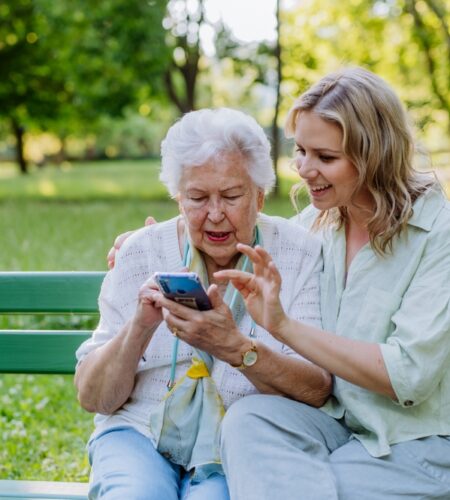In a world increasingly dominated by smartphones, ensuring that these devices are accessible to users of all ages, including seniors, is crucial. Recognizing this need, technology developers have been creating smartphone interfaces that are specifically customized for senior users. These interfaces address common challenges faced by the senior, such as reduced vision, hearing difficulties, and decreased motor skills, making smartphones not just usable, but also a valuable tool in their daily lives.

One of the primary features of senior-friendly smartphone interfaces is larger icons and text. Smaller icons and text can be challenging to see and interact with, especially for seniors with diminished eyesight. Customized interfaces typically feature larger, bolder icons and text, making it easier for seniors to navigate the phone’s functions without strain.
Another important aspect is simplified navigation. Complex menus and multiple screens can be overwhelming for users who are not tech-savvy or for those experiencing cognitive decline. Senior-focused interfaces are often streamlined to include only the most essential apps and functions, reducing confusion and making the phone more intuitive to use.
Voice recognition technology has become a key component in making smartphones more accessible for seniors. With voice commands, users can make calls, send texts, set reminders, and even search the internet without having to type or navigate through menus. This is particularly beneficial for those with arthritis or other conditions that make fine motor tasks difficult.
Auditory adaptations are also significant for senior users. This includes enhanced volume controls and compatibility with hearing aids. Some customized interfaces offer visual alerts for incoming calls or messages, an essential feature for seniors with hearing impairments.
Emergency features are an integral part of these customized interfaces. Quick access to emergency services, as well as features like fall detection or location sharing with family members, can provide peace of mind for both seniors and their loved ones.


Customization doesn’t end with the interface design; many smartphones offer a range of accessibility settings that can be tailored to individual needs. These might include options for color contrast, text-to-speech, and magnification gestures.
Smartphone interfaces for seniors often integrate health and wellness apps. These can include medication reminders, fitness trackers, and apps for monitoring health metrics like blood pressure and glucose levels. Having these tools easily accessible encourages seniors to be more proactive about their health.
In conclusion, customized smartphone interfaces for senior users represent a significant advancement in making technology more accessible and beneficial for the senior. By addressing the specific needs and challenges faced by seniors, these interfaces empower them to stay connected, engaged, and safe in the digital age. As smartphone technology continues to evolve, we can expect even more innovative solutions to support the independence and well-being of senior users.



Comments